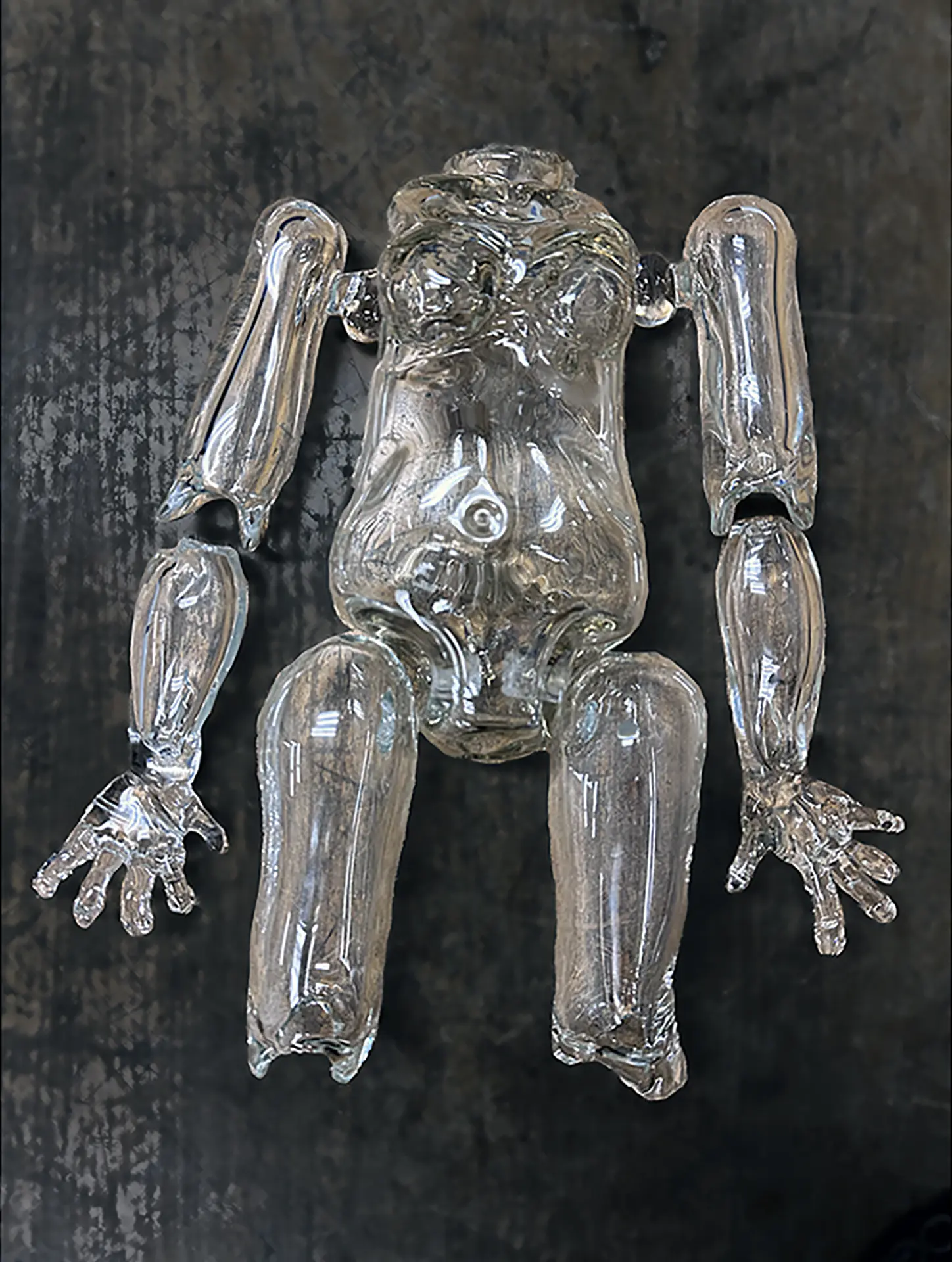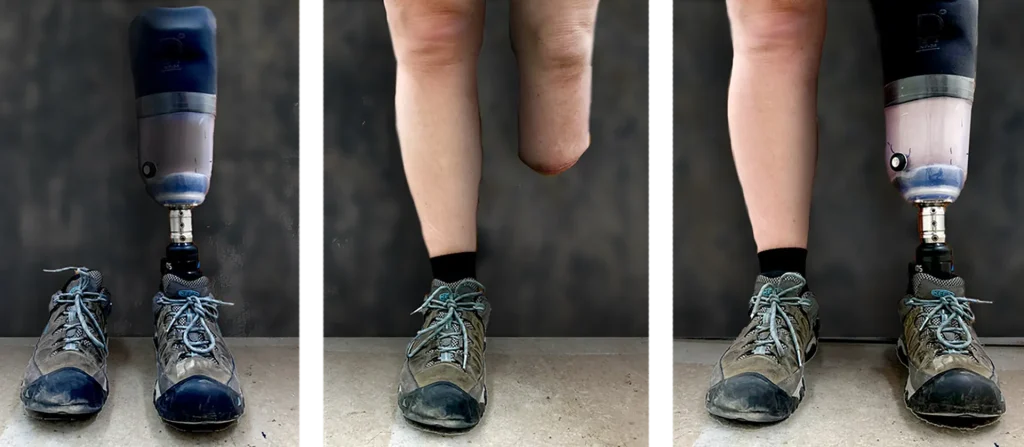Centering my work on my present experience in this body is complicated. Sometimes, my body makes it incredibly difficult to make the work. A few weeks ago, I had a migraine that temporarily robbed me of language—made words not make sense, made syllables come out in the wrong order. It took me a few days to realize what had happened and that I hadn’t just hit a wall of exhaustion or had one of those points in learning that can feel like I’ve unlearned everything that has yet to be put back together to make new sense. It took days longer to fully recover. Today I had a prosthetic appointment that resulted in getting my first “perfect fit” socket—one that didn’t require layers and layers of socks to fill space between my leg and the socket—and it resulted in the worst pain I have had since my epidural failed 24 hours after amputation. However, rather than being in the hospital with a nurse call button, I was standing in a meeting with faculty at school, turning green as the pain and pressure began to build. I finished the meeting in a sweat as my body crossed a threshold from manageable discomfort to sheer pain. With a “perfect fit” and the feeling of increasing pressure/swelling in the socket, I had no way to adjust, and was terrified that if I stopped somewhere to take it off that I wouldn’t be able to get my leg back into the socket and without any other mobility aids with me would be stranded. So, I gritted my teeth, let the tears roll down my face, and walked on a leg that felt like it was in a vice to get to my car while calling the prosthetist to ask if I could go back to the other socket.
I was “supposed” to be in the hot shop making marionette parts. I had planned the day to be “productive” and to make art that referred to my body’s experience of pain. Instead, I was back in it—both in my present body and in a PTSD flashback that put me back in time to the last time I felt that kind of pain. Time is a fickle, malleable, flexible, sticky, and inconsistent thing, especially where pain is involved. Days like today I understand, deep in my bones, the meaning of “Crip Time” as described by Ellen Samuels. She writes about this kind of time-travel that “Disability and illness have the power to extract us from linear, progressive time with its normative life stages and cast us into a wormhole of backward and forward acceleration, jerky stops and starts, tedious intervals and abrupt endings” (“Six ways of Looking at Crip time”). Days like today past, present and future merge like panes of glass laid over each other, definitions and distinctions obfuscated by circumstance or position. Time defies convention like one of those oil and water bubble timers where the colored beads of oil measure time as they “drip” towards the top in defiance of gravitational expectations.

As I drove myself, shaking and sobbing from the combined effects of pain and its relief, I cycled over and over through waves of rage (at all the times I have felt betrayed by my body), fear, determination, helplessness, defiance, exhaustion, and frustration. I felt myself split into three consciousnesses—one had to be the driver, one experienced the waves of feelings (both physical and emotional) as they coursed through me, and one spoke as I would to a friend (my inner narrator is not often as kind, but I think this was a moment where everything in me knew needed this kindness). This part told me that when I arrived at the prosthetist, I could be gracious but not apologetic, that I had not done anything wrong; and that neither my tears nor my feelings were inappropriate or overblown. This part reminded me to breathe, even when my body shook, and my lips sputtered. This consciousness gently reminded my shaking body to feel the current absence of pain, to exist in this momentary skin unconstrained by the socket that rode in the seat next to me, and observe that I was no longer in the plain of time that the pain (and the fear it wouldn’t pass) had lived in.
When I reached the prosthetist’s office, I opened the door, lifted the offending socket across myself, set it upright on the ground, took a deep breath, and lowered my leg into it. To my surprise, it went on without resistance or substantial discomfort. I gingerly walked inside, each step an exercise in trust, a defiance of fear, an active choice to keep going. I sat in the waiting room, rolled the sleeve of the leg down and propped my stump up across the top the socket—my trust did not extend past necessity. I didn’t have to wait long and managed to step into the socket again for the remaining distance to the treatment room. I described the phenomenal squeezing pain I had experienced, and the fear that had kept me from removing the socket before reaching my car. My chest was tight as I tried to keep my voice level, tried to ground my words in logic and reason, tried to pretend that there were not tears streaming down my face as I spoke. Without hesitation or argument my prosthetist switched things back to the old “too big” socket, and we worked through the alignment process. She expressed compassion and trusted my judgement, and we discussed possible next things to try. She reiterated that this is a process, that it takes time, that we make as many attempts and adjustments as necessary, and that sometimes things don’t work but we won’t stop trying.
It didn’t hit me until I was sitting here trying to figure out how to write about it all, trying to find some way to capture the slipperiness of Crip Time from within the wormhole, that today’s project in the hotshop was going to be making the lower leg parts of my self-portrait glass marionette. This puppet, with all her conceptual strings and fragility, was interrupted by medical forces outside of my control breaking me with a clear lower leg part.

